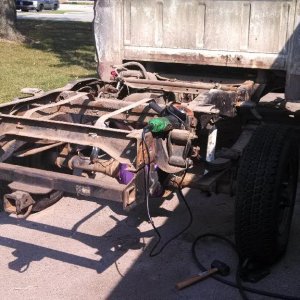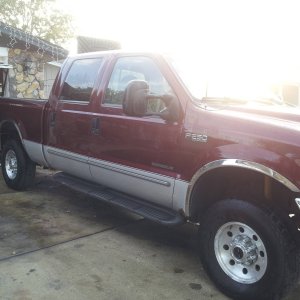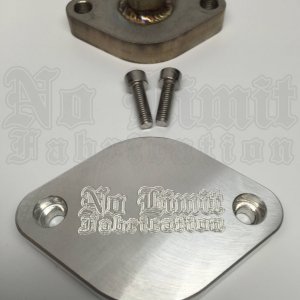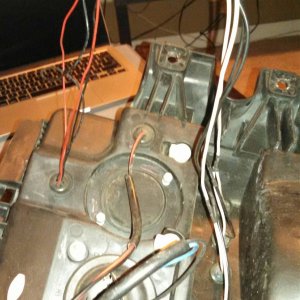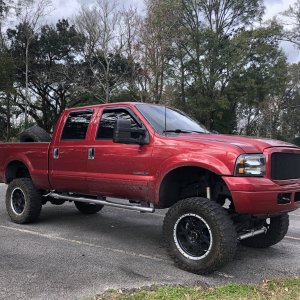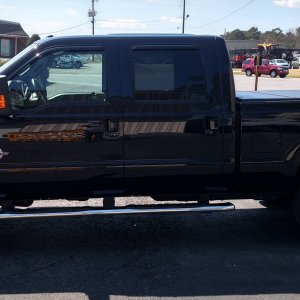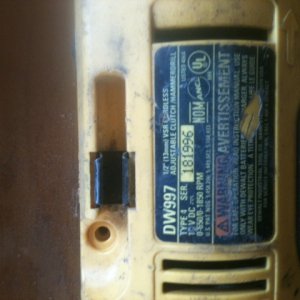Frame Stretching 101
I've been doing some homework on this, so here it is.
Step 1. Talk to the insurance company.
If you can't insure it, you can't license it. And if you can't license it, you can't drive it. It would be terrible to go to all the work to build it and then run into a situation where you can't use what you built.
My insurance company told me that they are fine with insuring a 6 door Superduty, but because its a modification to the frame, it needs to be inspected and certified. What did they mean by certified ? The same approval that is given to get a car with frame damage back on the road. They called that "certification".
Who does such "certifications" ? "An auto body shop that does inspections".
Step 2. Find someone to certify the frame.
So I called around to a bunch of body shops. And the answers I got were No., Never., Forget it. I wouldn't touch it. We don't do that. and No. :shrug: Obviously I was looking in the wrong place.
I almost gave up at this point. But then I saw a stretch limo on the road. So I called the limo company and they gave me the name of the company that works on their cars if they get in an accident.
So I called the company they recommended and set up a meeting. This business is a father and son team and all they do is frame work. They straighten frames, they stretch and shorten frames and they are a licensed inspection facility for just about everything including medium duty trucks.
It turns out that they have been fixing, modifying and inspecting frames for 20 years. They have done some really wild projects.
Step 3. Plan the job.
Once I found these people, I had a meeting with them where I showed them the truck and described what I wanted to do and how I was going to do it. After some discussion they said they would be happy to certify my work subject to it being done correctly. They will do this for anyone. Its their business. Their charge to do a frame certification is $300.
Actually, their certification would also cover the changes to the cab itself, but for the sake of this post I'll leave the cab out for now.
The "being done correctly" part was very interesting. There are guidelines and approved practices to stretching a frame that must be followed or they cannot approve it.
IIRC, their rules were
- the frame must be cut in a level, straight section. You aren't allowed to cut it in a bent section.
- the cut must be stepped or diagonal. No straight cuts.
- it must be bevelled and welded from both sides
- they must be able to inspect the work as it is being done
- they must be able to test the welds for penetration and hardness. They do this by trying to cut them apart with a chisel or they will grind a weld and then have you reweld it when they are done.
You don't have to be a certified welder, but the welds have to be very good. No bubble gum welds. No porosity. They must penetrate the frame properly.
- once the welds are approved they MUST be ground flat, so the frame is the same thickness everywhere.
- the frame alignment must be very good. Probably need to build a bit of a jig to hold it while its being worked on.
- a brace must be added to the frame, of their design. It needs to be welded where and how they say. It turns out you don't weld the brace to the frame flange and its stitch welded into place. Absolutely no continuous welds.
- the frame brace also needs to be bolted into place with some grade 8 bolts as a backup in case the welds fail.
They were very good about explaining what needed to be done and how to do it.
Their certification fee covers certifying the frame (and cab), as it would be if someone brought them a finished frame for inspection. It doesn't cover all the help that I might need getting things done correctly. Their charge for the extras was their standard shop rate of $80 an hour and they said that $500 should cover helping, inspecting and certifying.
After I met with them, I found this document.
https://www.fleet.ford.com/truckbbas/non-html/Q18.pdf
It basically explains most of the stuff they were telling me, except that
- Ford seems to think its OK to cut the frame straight, whereas their shop wants a step or diagonal cut.
- Ford doesn't mention bolting the frame brace as they seem to want me to do.
I haven't met with them since finding the Ford document. I'll show it to them and listen to what they have to say about what Ford recommends. In the end they need to be comfortable with what I have done in order to approve it. I don't have a problem with doing step cuts and adding bolts to the brace if they think its necessary.
I was very happy to find them. I'll gladly pay $500 for assistance with the project in order to do it right the first time and to get it certified in the process. I learned a lot just meeting with them. Their was no charge for our meeting.
I was further very happy to find the Ford document outlining how to stretch a Ford frame and even more happy to find that what Ford outlined basically matched what they were saying. It would have been a nightmare if it hadn't.
So it seems as though there is a way to properly, professionally stretch a frame in such a manner that its straightforward to do, it will last as long as the original frame, its in a manner that Ford likes and its something that insurance companies will not frown upon. I couldn't ask for anything more.
I was nervous about stretching the frame prior to finding all this out, especially having to tell my insurance company about it and having to convince them there wasn't going to be any issues with it.
When I was researching this, I came across a number of frame stretches on the Internet that broke just about every rule in both the Ford document and the frame shop's guidelines. I don't know what to say about those except that I highly recommend following the path I did if you are going to stretch a frame.
I hope this helps someone.


